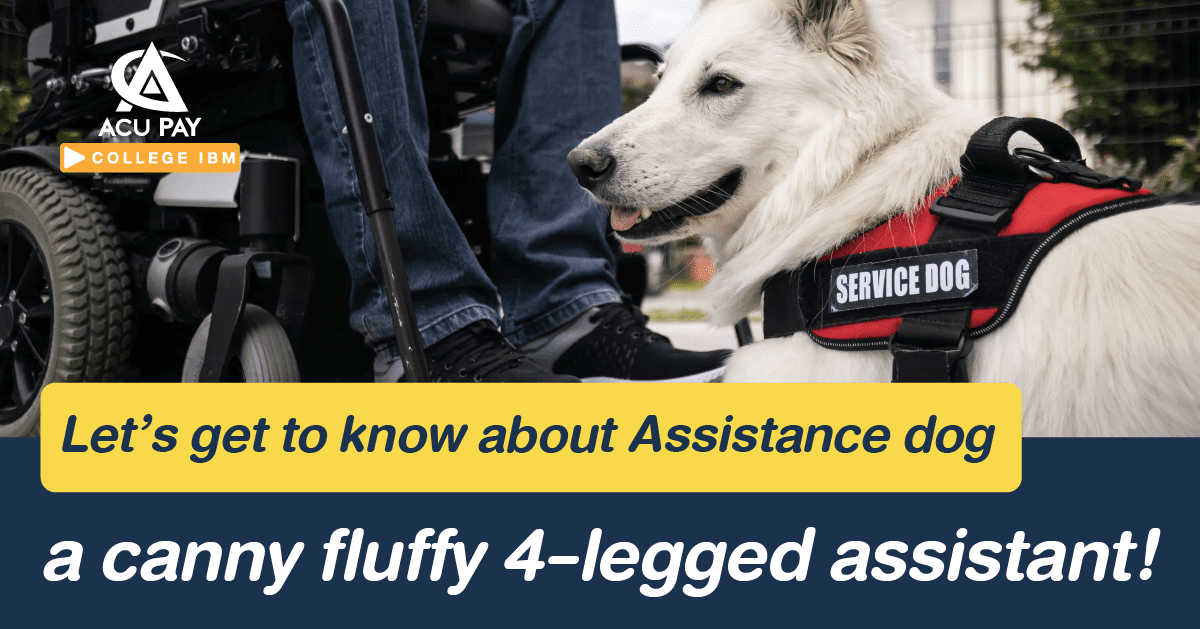

Dogs are not only good friends to humans but they can be trained and get a duty as our assistants as well. Today, ACU PAY will introduce Assistance dogs and what they can do for you guys.
They are dogs that are trained in intensive training by experts. The main function is to facilitate the disabled or people with health disorders to live a normal social life. Did you know that these dogs will have to train themselves for 18 months – one and a half years before they can be assistance dogs? The reason is that they need enough skills to help people with disabilities in all situations.
The average life expectancy of an assistance dog is 7-10 years. After that, the dog will retire and find a new assistance dog to take over. Owners can choose to continue raising. If it is inconvenient to continue caring, they will find a new home for the dog or send it back to the old training center.
The assistance dogs can be divided into 3 groups which are
Since assistance dogs will be given the privilege of being able to enter public places, including hospitals, and government places where there are many people. Therefore, there must be various special features that other dogs do not have as follows:
Assistance dogs must have a controllable maturity. This skill is acquired through rigorous training. Dogs must be in a stable mood, not distracted, and not panicked by other stimuli, such as not being shocked by the sound of a horn on the road or chasing cats. This skill is very important for helping people with disabilities reach their target locations safely.
Normally, the surrounding stimuli are obstacles for pets like dogs, but trained dogs can distinguish alarm sounds from general noise and help people with disabilities promptly.
Assistance dogs need to be under the command of handicapped people 24 hours a day or throughout their work. Unlike ordinary dogs who have their own time to rest. In addition, they need to be trained in both voice command and sign language.
Assistance dogs will be trained to wait for their owners to order before doing so to prevent harm or accidents in the case of guide dogs for people with vision impairment, they must know when to stop or which way to walk while preventing dangers especially when crossing the road.
Recognizing the owner’s name is another important feature of an assistance dog. In case someone calls from a distance or people with hearing impairment, the dog will also act as a notifier to the owner.
Assistance dogs must concentrate on their work all the time, so when you see that assistance dogs are working, you should never go in and rub or get close without the owner’s permission because it can distract them while doing their job.
The intelligence of an assistance dog is quite amazing, right? It is hoped that in the future, Thailand will provide more convenience for assistance dogs to help people with disabilities and impairment live safer and more independent lives.
Reference from